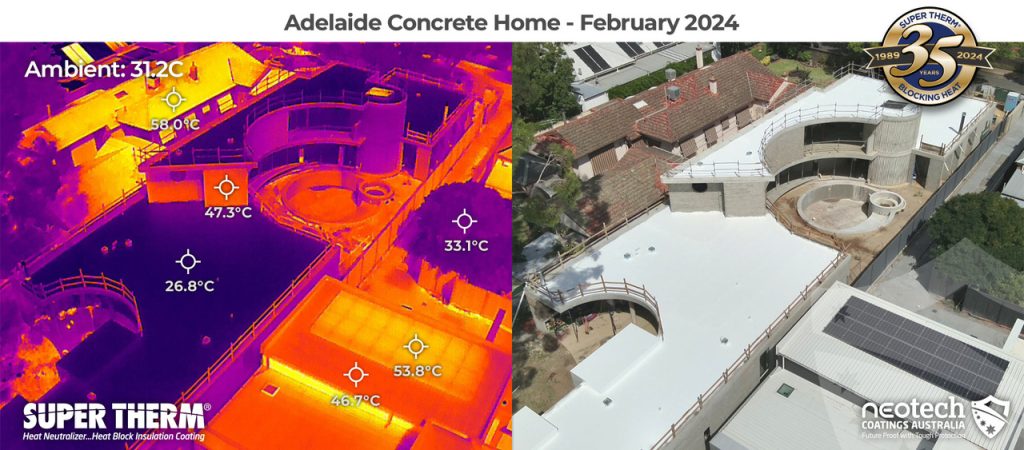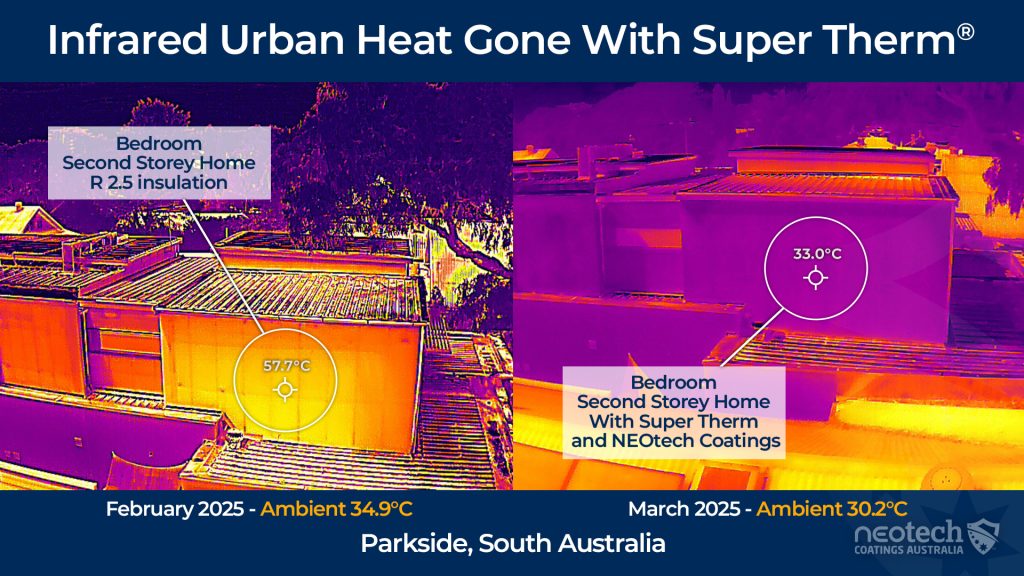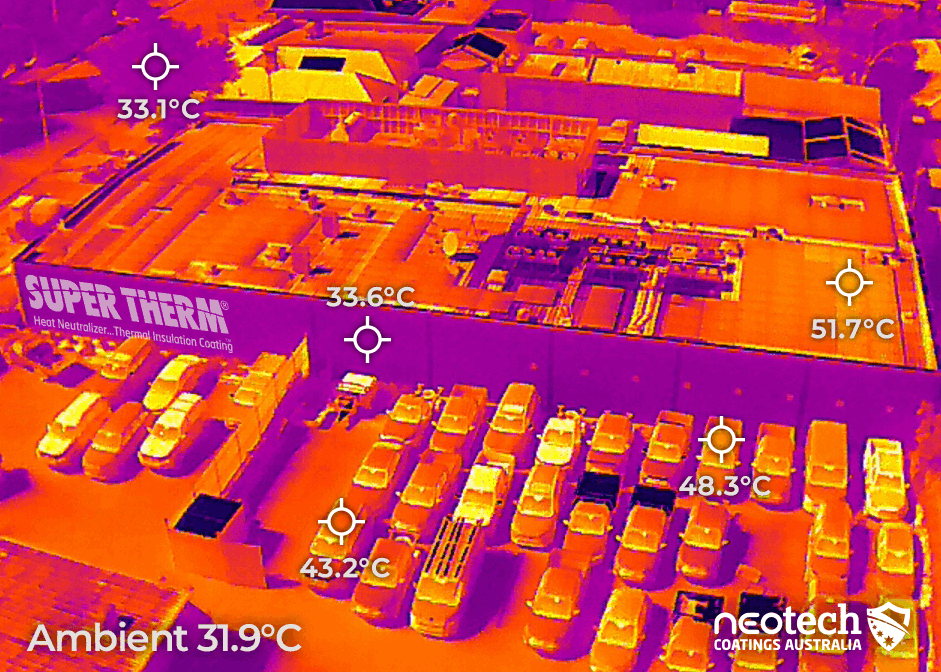Insulating Concrete & Tilt Up Walls
Concrete absorbs heat…it is a large Thermal Mass!
Thermal mass is the ability of a material to absorb, store and release heat. Thermal lag is the rate at which a material releases stored heat. For most common building materials, the higher the thermal mass, the longer the thermal lag.
Materials with high thermal mass and long lag times are often simply referred to as ‘thermal mass’. These are typically heavyweight construction materials like concrete, brick and stone. Materials with low thermal mass are typically lightweight construction materials, like timber frames (source).
With regular painting or roof restoration a concrete surface can virtually last a very long time but there’s few solutions to blocking the heat load on a wall…Super Therm has proven globally since 1989 it blocks heat load into concrete.

In summer, a building with concrete surfaces can experience increased internal temperatures due to concrete’s high thermal mass. This effect can lead to:
- Higher Cooling Costs: As the concrete absorbs and stores heat from the sun, the interior of the building may become warmer, leading to increased use of air conditioning and, consequently, higher energy bills. While the thermal mass absorbs less heat in winter, the benefits of summer passive cooling of a thermal mass are much more significant.
- Thermal Discomfort: The slow release of heat absorbed during the day can make the building uncomfortable for occupants, especially during the night when it is expected to cool down.
- Increased Energy Demand: The need for cooling to maintain comfortable temperatures inside buildings contributes to higher overall energy demand, which can strain energy resources and increase greenhouse gas emissions.
- Safety of Internal Space: Many internal spaces that have concrete are either for living or working. In the case of data warehouses its the storage of valuable computers and networks. Protecting the envelope concrete reduces the airconditioning pressure on keeping internal temperatures ambient.
Implementing energy-efficient designs and Super Therm® can mitigate these negative thermal mass effects, improving thermal comfort and reducing energy costs while protecting assets.

Trapped Heat in the Concrete Surface
Concrete traps heat. The thermal mass of concrete allows it to absorb a significant amount of heat from sunlight including visual, UV and infrared. It’s the infrared heat that’s the biggest challenge for blocking heat load. Without adequate insulation or ventilation, the heat absorbed by the concrete surface during the day can be trapped, causing temperatures to rise significantly. This heat can then radiate into living spaces, increasing the interior temperature and leading to higher cooling costs.
Applying Super Therm® thermal insulation heat block coating on concrete can significantly help in blocking the heat load keeping the surface near ambient. Super Therm® is designed to reflect and block 96.1% of the solar spectrum, including visible light, ultraviolet (UV), and infrared (IR) rays, which are primarily responsible for heat buildup.
By reflecting and blocking these rays, Super Therm® reduces the amount of heat absorbed by the roof tiles, thereby minimising the heat transfer into the concrete and subsequently into the building. This can lead to a cooler interior environment, reduce the need for air conditioning, and lead to energy savings. Additionally, it can contribute to extending the lifespan of the concrete by protecting it from UV and heat damage along with reducing moisture absorption.

Concrete Thermal Mass Cooling for a Home
Discover the ultimate solution for cooling concrete with Super Therm®! Our revolutionary coating blocks an impressive 96.1% of total solar heat, keeping your thermal mass cool even on scorching days. In this video, witness the incredible difference as we apply Super Therm® to a concrete house in Unley, South Australia.
Despite temperatures soaring over 40°C on the surface, the section treated with Super Therm® remains comfortably in the high 20s, while the unprotected area climbs even higher. By blocking the solar heat load from penetrating the surface, Super Therm® ensures your concrete stays below ambient temperature. Compared to surrounding materials, Super Therm® coated surfaces can be over 50% cooler than other materials, providing unparalleled comfort and energy efficiency. Ready to keep your concrete cool and save on energy costs? Learn more about Super Therm® insulation coating today!










